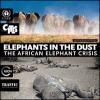UNEP, Global Resource Information Database (GRID)
Dead planet, living planet : biodiversity and ecosystem restoration for sustainable development
This report is a contribution to the UN's International Year of Biodiversity and is a complement to the UNEP-hosted Economics of Ecosystems and Biodiversity (TEEB) which is bringing visibility to the wealth of the world's natural capital. It documents over 30 successful case studies referencing thousands of restoration projects ranging from deserts and rainforests to rivers and coasts.
African elephant database February 1992
Tropical mangrove vegetation mapping using advanced remote sensing and GIS technology
Disaster risk, livelihoods and natural barriers, strengthening decision-making tools for disaster risk reduction : a case study from Northern Pakistan

This project attempts to profile the disaster that took place in Neelum Valley, AJK, Pakistan. Its goal is to strengthen decision-making tools by identifying the main land use factors and land use strategies that affect the vulnerability of communities in Neelum Valley.
Elephants in the dust : the African elephant crisis : a rapid response assessment

The African elephant, the largest remaining land mammal on the planet, is facing the greatest crisis in decades. Reports of mass elephant killings in the media vividly illustrate the situation across many African elephant range states. This publication provides an overview of the current state of the African elephant alongside recommendations for action to ensure its protection.
Vital forest graphics

Over the last few years, two key environmental issues, closely related, have been on the top of the environmental agenda: climate change and deforestation. Forest is a subject for these two concerns. Deforestation, estimated at above 13 millions hectares a year, or an area roughly equivalent to the size of Greece, has immediate consequence in terms detraction of livelihoods for people, increased carbon emissions, and loss of biological diversity to mention few.
Poverty-conservation mapping : the geography of poverty and biodiversity

